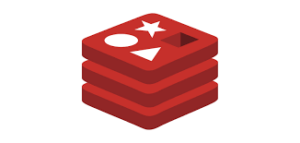Learn how to remove Redis from a DirectAdmin server. Our DirectAdmin Support team is here to help you with your questions and concerns.
Remove Redis from a DirectAdmin Server in 6 Steps
 Redis is commonly used for caching and real-time data processing. However, if we no longer use Redis on the DirectAdmin server, it’s a good idea to remove it cleanly to free up system resources and eliminate potential security risks.
Redis is commonly used for caching and real-time data processing. However, if we no longer use Redis on the DirectAdmin server, it’s a good idea to remove it cleanly to free up system resources and eliminate potential security risks.
This blog takes us through removing Redis from a DirectAdmin-managed server step-by-step.
An Overview:
Step 1: Stop the Redis Service
Before beginning the uninstallation process, ensure the Redis service is not running.
Here is the command to stop Redis:
sudo systemctl stop redisIf Redis was started manually or via a custom script, we must stop it.
Step 2: Disable Redis from Starting at Boot
To prevent Redis from automatically starting during future reboots, we can disable it with this command:
sudo systemctl disable redisStep 3: Uninstall Redis
The removal method depends on how Redis was initially installed.
- If installed via APT (Debian/Ubuntu):
sudo apt-get remove --purge redis-server - If installed via YUM (CentOS/RHEL):
sudo yum remove redis - If installed from source, we have to delete the binaries and associated directories manually:
sudo rm /usr/local/bin/redis*
sudo rm -rf /etc/redis/
sudo rm -rf /var/lib/redis/
Like removing Redis, keeping your server lightweight often involves managing software installations. If you’re planning more significant changes, check out our DirectAdmin to Plesk migration guide.
Step 4: Remove Redis Configuration Files
Even after uninstalling Redis, some configuration files may remain. To clean up, run:
sudo rm -rf /etc/redis/Also, double-check if any data files were stored in custom directories and remove those manually.
Step 5: Verify Redis Removal
To confirm Redis has been fully removed, check the following:
- Check if Redis is still running:
ps aux | grep redis - Check if Redis binaries still exist:
which redis-server
If everything has been removed properly, these commands should return no results.
Step 6: Reboot the Server
To ensure all services are refreshed and changes take effect, we need to reboot the server:
sudo rebootAdditional Tips
- If Redis is storing critical data, back it up before removal.
- Ensure no other services on the server depend on Redis. Removing it could break those services.
- If Redis is used for caching, consider switching to other caching tools like Memcached or application-level caching strategies.
[Need assistance with a different issue? Our team is available 24/7.]
Conclusion
Removing Redis is an easy process, doing it methodically keeps the system stable and clean.
In brief, our Support Experts demonstrated how to remove Redis from a DirectAdmin server.







0 Comments